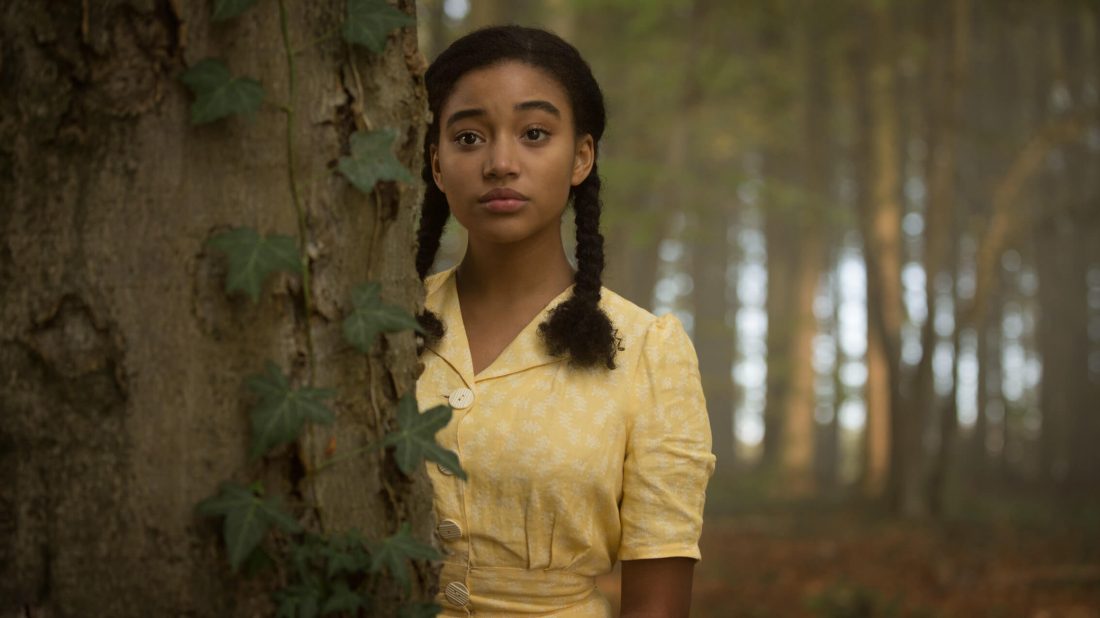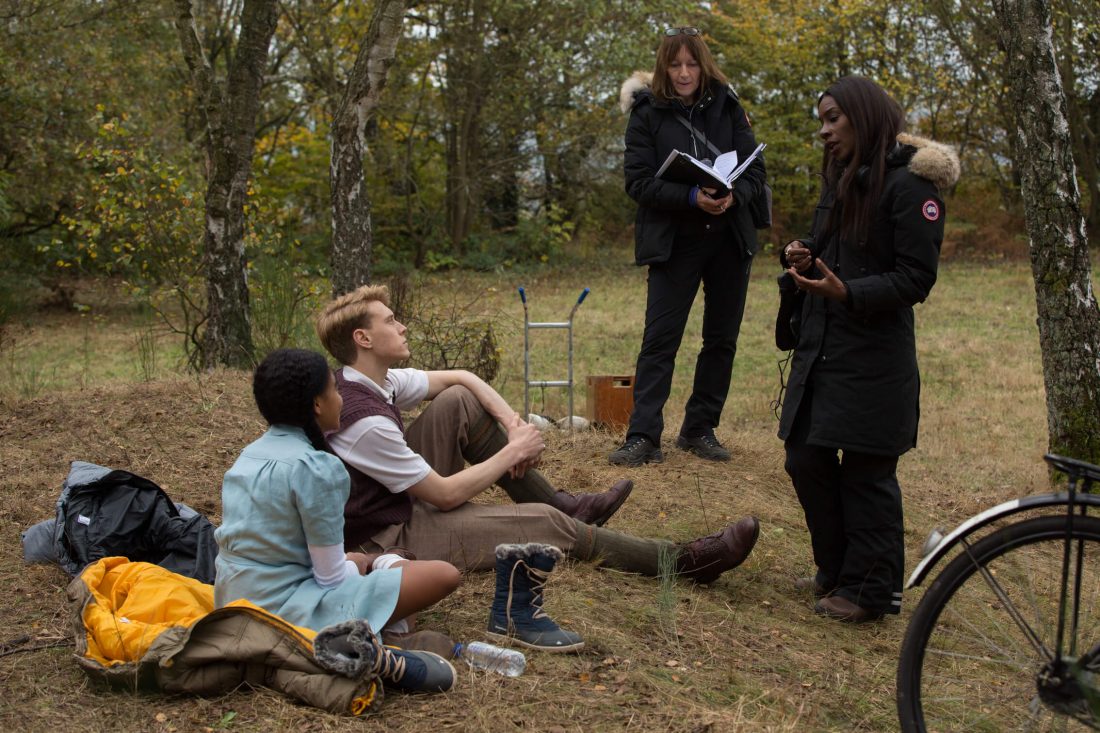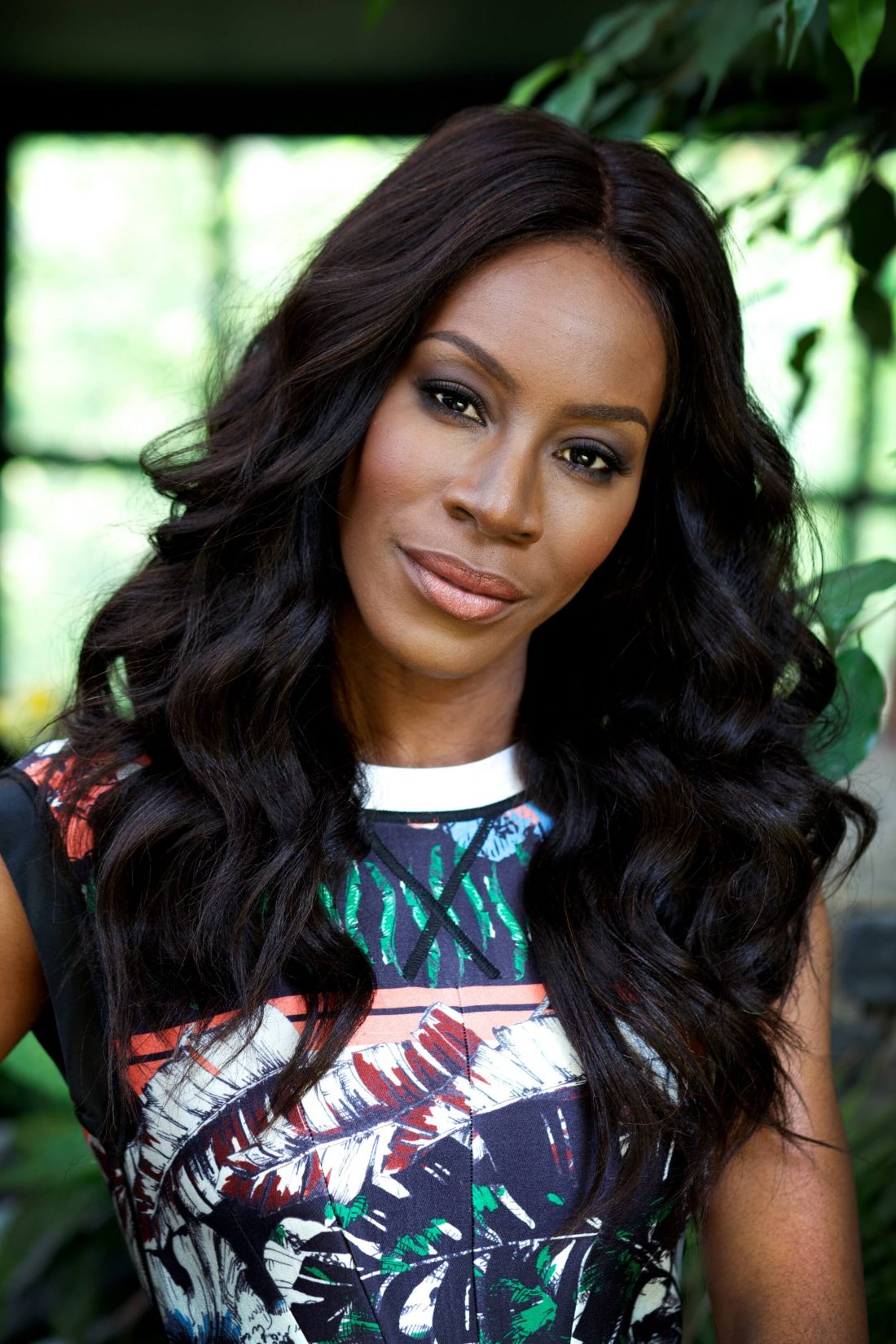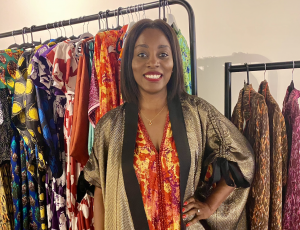In her latest project, BAFTA award-winning writer and director, Amma Asante, finally realises a decade old ambition to bring to the big screen, Where Hands Touch, a tragic, interracial love story set in 1944 Nazi Germany.

Shortly after the premiere of the film at the Toronto International Film Festival last September (2018), an audience of Black content creators and independent publishers were treated to an intimate screening of the film followed by a Q&A with the director, hosted by editor and founder of Black Ballad, Tobi Oredein.
The film, starring Amandla Stenberg (The Hate U Give, Hunger Games) as Leyna, is a coming of age story set in the most brutal of times: Germany, 1944. Leyna, the 15-year old daughter of a white German mother (Abbie Cornish) and a black African father, meets Lutz (George MacKay), a compassionate member of the Hitler Youth whose father (Christopher Eccleston) is a prominent Nazi solider, and they form an unlikely connection in this quickly changing world.
As Leyna’s mother strives to protect her from the horrors that she could face as a mixed-race German citizen, Leyna is forced to forge her own path as the war goes on and the Nazis increase their atrocities over the Jews and all dissidents. Can she find an ally in Lutz, himself battling a fate laid out before him that he is hesitant to embrace?

The story of how Asante, who both directed and wrote the screenplay, is a compelling one. The storyline is not what you would immediately associate with the director who brought us two critically acclaimed films, Belle (starring Gugu Mbatha-Raw) and A United Kingdom (starring David Oyelowo). However, as she describes, the script for Where Has Touch, pre-date both of her most popular films. Shortly after completing her first film, A Way Of Life (2004), she was searching for her next project.
“The idea for Where Hands Touch came from a realisation that I didn’t know much about Black people in Europe. I knew more about African American history than about history that was closer to me. So, I turned to google!”
Her search eventually centred on Black people in Germany after constantly coming across a fascinating picture of a young boy. “I kept seeing these unexpected images, one in particular stuck, of a little boy, who is about six years old, he’s clearly bi-racial and he’s wearing a tank top with a swastika on it.” In an unexpected outcome, this little boy went on to become an editor at Ebony magazine. How did this happen? What was HIS story in the familiar narrative of the holocaust?
“Where Hands Touch was supposed to be my second film, but I was told that it was too big for me. A lot of financiers told me that my first film was small and documentary style and why didn’t I find something like that to do.”
Another key reference point for the director was a picture of a little girl she also found online, [Asante included this image at the end of the film]. “Every time I looked at her, I couldn’t make out her expression. I just couldn’t make it out. It was like she was identity-less. I later found out that she was a schoolgirl. The white girls around her were also school children. I couldn’t understand how that worked, knowing that Jews were not allowed to go to school in that period. How was this Black child in school? And so there I was, making all of these assumptions, but every time my assumptions of what I knew about Black people in Nazi Germany was being knocked.”
Through her research, Asante learned of the existence of a generation of mixed-race German children, who were probably the offspring of German mothers and French-African soldiers stationed by the French government on the German border, The Rhineland, after World War I as part of the occupation.
She embarked on an in-depth research period lasting about a year and a half, during which time she traced and interviewed a number of Black and Biracial survivors. Taking cues from her in-depth research, Asante began to develop her storyline, a microcosm of life in Germany during the Second World War, the story of ordinary people during the holocaust. In particular, she wanted to go against the grain of highlighting the story of either the hero or the villain as is generally reported. “Who were you if you were not Schindler and you were not Hitler. What was that space in the middle? What did ordinary Germans do or not do?”

As far removed as these experiences are from our reality here in present day UK, Asante describes the commonality of understanding the complexity of the difference of what it means to grow up, in suffering or struggle with a community around you and the difference of growing up with suffering and struggle when you are isolated and you don’t have a community around you as did the children in the photographs who were literally surrounded by white supremacy.
While clearly not the same thing, Asante likens this to the experience of many Black women, especially those that live outside London. She says, “In this weird way, we all know that Black girl who says, ‘I just come up to London once a month to get my hair done,’ or ‘it wasn’t until such and such a time that I realised I was Black’.”
Throughout the film, Leyna comes across numerous circumstances that could have broken her mind, body and spirit but Asante’s admission that “I wanted to create a girl of colour who was a champion” meant that the character manages to overcome all of these, while still acknowledging the flaws and mistakes she makes along the way.
There is no doubt that this is an ambitious film and it will come as no surprise that Asante encountered stiff resistance to making it.
“Where Hands Touch was supposed to be my second film, but I was told that it was too big for me. A lot of financiers told me that my first film was small and documentary style and why didn’t I find something like that to do.”
She had a choice. It was interesting to hear the complicated process behind getting a film to green light stage. Over the years, Asante has encountered criticism, even from the Black community, for the films she makes. Even with a resume such as hers, with proven past results, it was illuminating to hear how much she still has to toe the line and work to see her projects come to life. As she described, it is so easy to be boxed into making only one kind of film. This point is proven when you consider that Asante wrote the script for Where Hands Touch more than a decade ago but couldn’t take it further before now.
“They were saying no, but I didn’t give up, I was going to prove that I could make this film and when Belle came to me a few years later it was precisely because I had written the script for Where Hands Touch.”
Eventually, finance for Where Hands Touch also came off the back of Belle too, so when David Oyelowo came to her with the proposal to make A United Kingdom and its subsequent success, it smashed all arguments about whether she could handle such a complex film.
No doubt, bringing this film to life was a labour of love for Asante, and in spite of how long it took to see the light of day, it is strangely contemporary.
“Leyna’s journey, really, is to come to understand her identity and understand her role in a society that has begun to eat its own tail. It is turning on its own people.”
She pauses. “Does that sound familiar?”
Where Hands Touch is released in the UK on 10 May 2019












